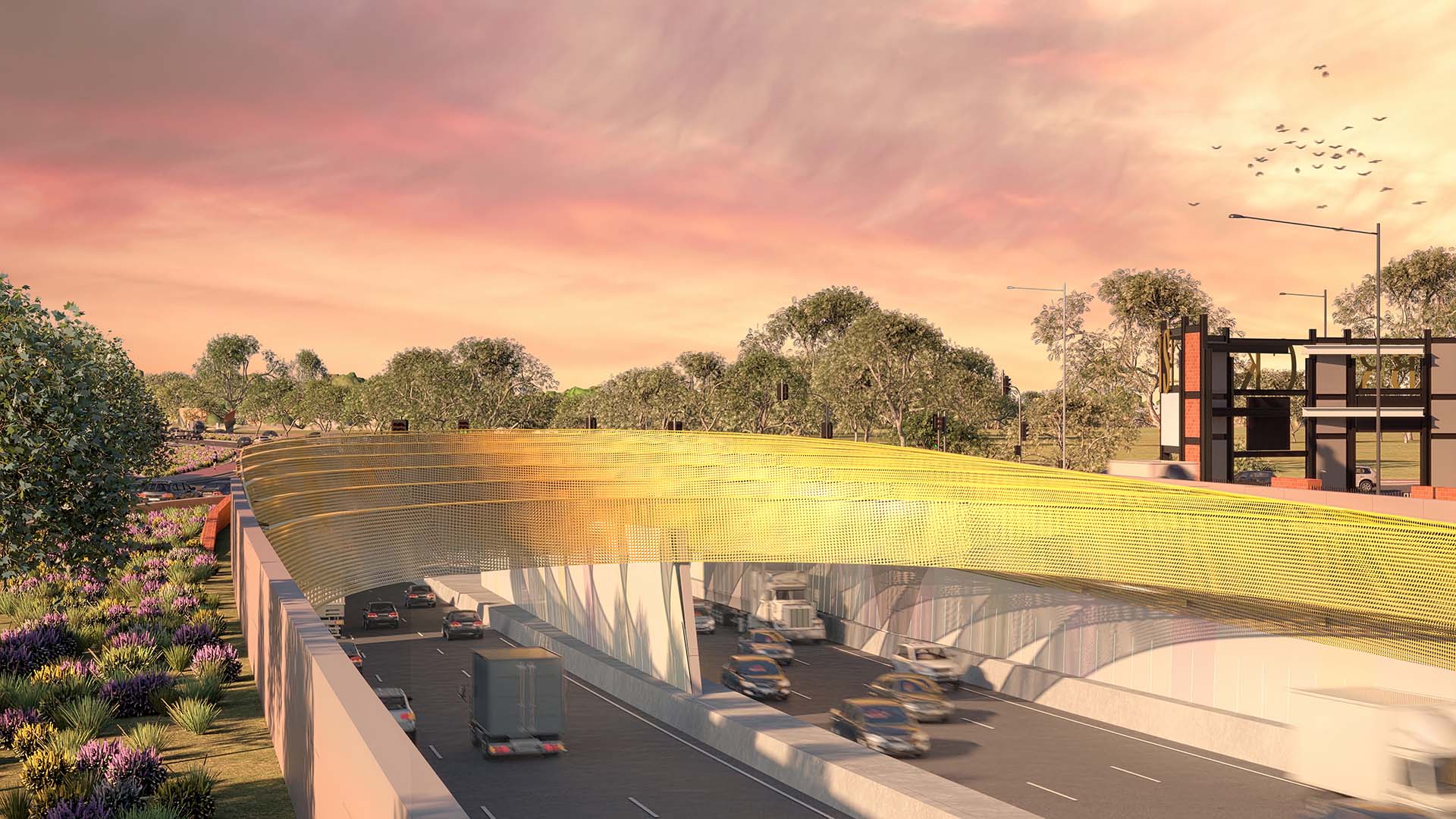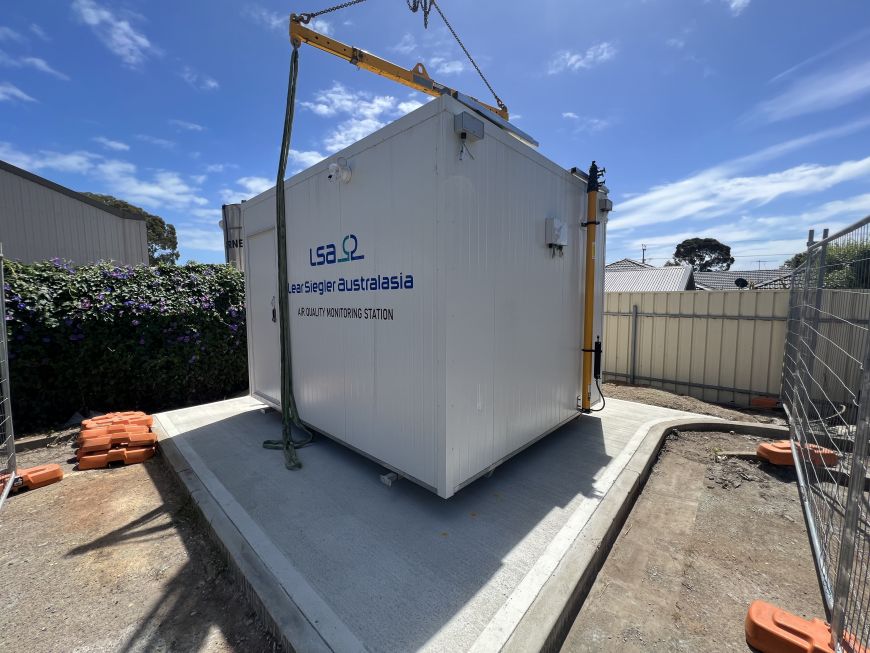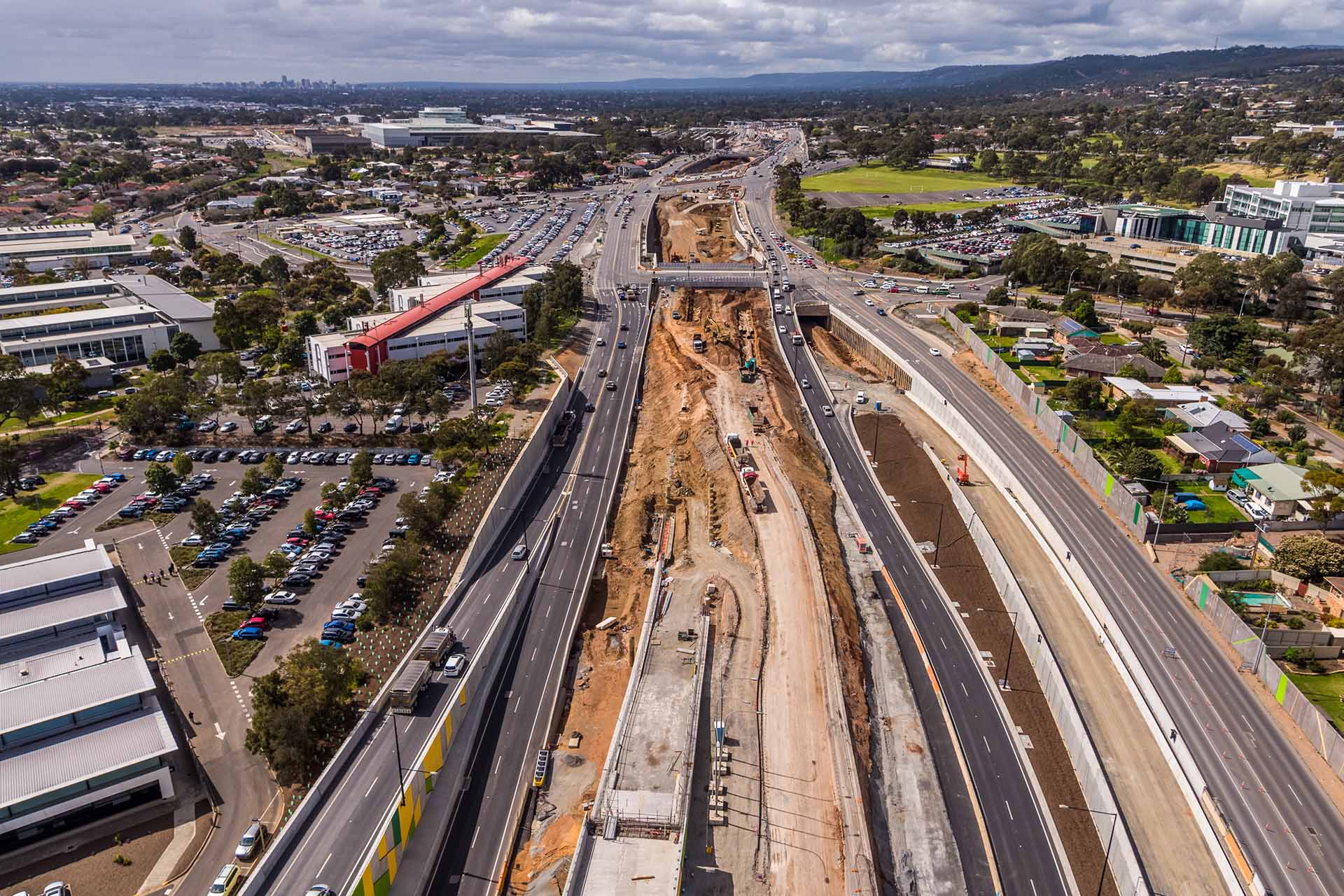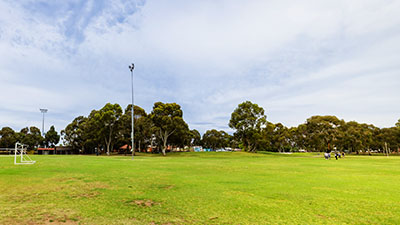Air quality
Air quality refers to the degree to which the air is suitable or clean enough for humans or the environment.
Impacts to air quality may arise during the construction and operation phases of the T2D Project which have the potential to negatively affect air quality if suitable mitigation measures are not implemented. Air quality impacts generally arise from the emission of air pollutants from machinery, excavations or other construction processes into the atmosphere.
During construction, a common impact to air quality (if unmitigated) is the dust generated through clearing of sites, during excavation activities or through the management of spoil. This dust consists of what is known as particulate matter (PM).
During the operation phase, fuel combustion arising from vehicles using the road can result in increased or new emissions of key pollutants which include nitrogen dioxide (NO2), and PM10 and PM2.5.
Measures to mitigate impacts to air quality will be implemented during construction. The project will be designed to ensure minimal negative impacts to air quality once operational.
- Summary
Download a summary of the Air Quality impact assessment in PDF format
Approach
The assessment of air quality impacts from the T2D Project was based on technical investigations undertaken across a number of years and as the project design evolved. For more information visit About the design.
The following processes were followed to gain an understanding of the likely level of air quality impacts from the project:
- identification of the key policy, guidelines and legislation which are relevant to the assessment of air quality impacts from the project.
- identification of air quality sensitive receptors in the vicinity of the project
- characterisation of existing air quality
- identification of potential air quality sources associated with the project.
Once the existing air quality, sensitive receptors and potential future sources of air quality impacts were confirmed, the potential for impacts occurring during both construction and operation of the project was assessed. The technical investigations that specifically relate to air quality from the project that were considered by the Department include:
- assessment of the predicted air quality within the tunnels
- assessment of predicted external/ambient air air quality.

Photo: Northern Tunnels, northern portal.
Assessment area
The air quality impact assessment area extends for the entire length of the project corridor including a 1km buffer on either side of the T2D Project as outlined in the map below:
Map: Air quality assessment area.
Map disclaimer
Existing environment
The level of impact experienced from air emissions can be influenced by a number of aspects including:
- the presence of sensitive receptors
- local meteorology and climate
- ambient air quality.
Sensitive receptors
Sensitive receptors are places or areas which are vulnerable to air quality impacts such as hospitals, schools, parks, reserves or households. The project is located in an urban environment with air quality sensitive receptors in proximity to the portals of the Northern Tunnels and Southern Tunnels, the surface road connecting these tunnels and the existing South Road. The identified sensitive receptors include residences, schools, kindergartens, aged care facilities, hospitals, childcare centres and places of worship.
The following map shows key identified sensitive receptors, the air quality impact assessment area:
Map: Key air quality sensitive receptors.
Map disclaimer
Climate and meteorology
Weather-related conditions are important for determining the direction and rate at which emissions from a source would disperse. The key meteorological requirements relevant to air quality are typically hourly averaged records of wind speed, wind direction, temperature and cloud cover. The prevailing wind conditions in the area are considered strong (>5m/s) from the southwest and light (<1m/s) from the northeast. Higher wind speeds (>5m/s) typically result in lower concentrations of air quality pollutants.
Ambient air quality
The current local ambient air quality surrounding the project is important to consider when assessing cumulative (project plus background) air quality impacts. This includes ambient concentrations of NO2, PM10 and PM2.5. A review of the current ambient air pollutant concentrations found that concentrations of NO2 and PM2.5 were satisfactory and under the relevant limits outlined in the South Australian Environment Protection (Air Quality) Policy and the National Environment Protection (Ambient Air Quality) Measure (NEPM AAQ) for the assessed period.
Concentrations of PM10 on occasions exceeded the relevant limits for the assessed period, with only occasional exceedances of the short-term limit. This is a common occurrence across the nation in similar locations (i.e. urban areas) with exceedances often related to windblown dust, bushfires and other significant dust generating events.
 Photo: Sensitive receptor, Queen of Angels Church.
Photo: Sensitive receptor, Queen of Angels Church.
Impacts and mitigation measures
The potential air quality impacts have been assessed by applying the project’s assessment methodology. This methodology documents the process for assessing the key social and environmental risks from the project and identifies management and mitigation measures to reduce these risks. A project-wide evaluation of each potential air quality impact was undertaken for both the construction and operational phases of the project.
Construction impacts
The key outcomes of the assessments regarding air quality impacts during construction are summarised below. The two main impacts identified can arise from a number of construction activities and apply to all areas of the project. Note that the impacts identified do not include the implementation of mitigation or management measures which if applied correctly, should address or minimise any negative outcomes.
Potential construction impacts | Activity |
|---|---|
Deposition of larger dust particles causing aesthetic impacts at sensitive receptor locations (for example dust settling on a house or garden). |
|
Generation of dust (PM10 and PM2.5) from soil disturbance causing health impacts at sensitive receptor locations (for example small dust particles that could be breathed in by people living adjacent to the project). |
The project will take all reasonable and practical steps to prevent any damage and minimise any impacts on health and amenity. Air quality construction mitigation measures will aim to:
- minimise any impacts on the health and amenity of the surrounding community
- keep the community well informed about air quality effects
- allow the project to be constructed safely and efficiently.

Photo: Air quality monitoring station installed as a part of monitoring air quality along the project alignment.
Construction
The proposed mitigation measures to minimise or avoid air quality impacts during construction are outlined below:
Construction activities | Key mitigation measures |
|---|---|
Air quality impacts from construction activities (general) | The construction contractor will be required to ensure any construction impacts are proactively minimised, monitored and managed. The construction contractor will prepare a Construction Environmental Management Plan (CEMP) which sets out how air quality impacts will be minimised and monitored. For more information visit about construction. |
Site clearance and construction site establishment | The project will:
|
Earthworks | The project will ensure:
|
Construction of surface roads and other civil infrastructure Dive structure/portal and tunnel construction | The project will ensure:
|
Traffic movement associated with material transport | The project will ensure that:
|

Photo: Earthworks, construction of the Darlington Upgrade.
Operational impacts
For a road tunnel, during operation emissions are generated by vehicles within the tunnel and will be discharged into the environment via a combination of ventilation facilities and managed emissions from the tunnel portals. Emissions are also generated on the surface roads constructed as part of the project. Measures and requirements are in place to ensure the T2D Project meets air quality limits and incorporates features to control in-tunnel and atmospheric pollution levels.
A significant proportion of vehicles currently using South Road where there is poor traffic (i.e. signalised intersections with stop-start movements) will relocate to the new motorway. This is expected to improve traffic conditions, to provide an improvement to air quality at ground-level locations along the project corridor. At these locations, the T2D Project would have the potential to improve community health and amenity. The table below outlines the proposed mitigation measures to minimise or avoid air quality impacts during operation:
Potential operation impacts | Mitigation measures |
|---|---|
Localised reduction of air quality
| The project will:
|
Control of air quality has been considered throughout the design process. The project is taking all reasonable and practical steps to eliminate or reduce the risk of any impacts on health and amenity.
How impacts will be minimised or avoided
During design the project has confirmed that application of the Department’s Master Specification (MS), with its links to relevant parts of the Environment and Heritage Technical Manual (EHTM) will be applied to mitigate the construction and operational air quality impacts. Additionally, project-specific requirements have been developed.
Of relevance to air quality are:
- MS PC-ENV1 – Environmental Management
- MS PC-ENV2 – Environmental Protection Requirements
- MS PC-ENV3 – Environmental Design
- MS PC-SI2 – Site Investigations
- EHTM Attachment 1A – Environment and Heritage Impact Assessment Guideline
- EHTM Attachment 3A – Air Quality Assessment Guidelines.
The Master Specification and EHTM require the project to develop and undertake assessments and prepare reports that document required outcomes during construction and operation which include:
- Contractor’s Environmental Management Plan (CEMP)
- Detailed Design Air Quality Impact Assessment – demonstrates that the project’s design meets the air quality requirements during operation
- Construction Air Quality Management Plan – outlines measures which will be used to suitably manage dust and other air quality impacts during construction to minimise impact to community, and is a sub-plan of the CEMP
- Operational Air Quality Management Plan – outlines measures which will be used to suitably manage air quality impacts during operation of the tunnels and motorway.
Approvals
Approvals, permits and authorisations
The likely air quality related legislative or policy approvals required to progress the project to delivery are:
Legislation/Policy | Approval |
|---|---|
Required | |
| National Environment Protection (Ambient Air Quality) Measure (NEPM AAQ) | This sets standards that consist of quantifiable characteristics of the air against which ambient air quality can be assessed for population exposure. The requirement is to not exceed the standards established in the measure. Demonstrate compliance. No specific approval required, however compliance with the National Environment Protection (Ambient Air Quality) Measure needs to be demonstrated. |
| National Environment Protection (Air Toxics) Measure (NEPM Air Toxics) | This provides information regarding ambient air toxics within the Australian environment in order to facilitate the development of standards. The requirement is to gather sufficient data nationally to facilitate development of a standard. Demonstrate compliance. No specific approval required, however compliance with the National Environment Protection (Air Toxics) Measure needs to be demonstrated. |
| Environment Protection Act 1993 (EP Act) | The EP Act establishes the general environmental duty to not undertake an activity that pollutes or might pollute the environment, unless all reasonable and practicable measures to prevent or minimise any resulting environmental harm have been taken. No specific approval required, however the project must demonstrate that all reasonable and practicable measures will be undertaken to prevent or minimise air quality impacts during construction and operation of the project. |
| Environment Protection (Air Quality) Policy 2016 (Air EPP) | The Air EPP establishes maximum pollutant ground level concentrations to protect the health and amenity of sensitive receivers. Demonstrate compliance. No specific approval required, however compliance with the Environment Protection (Air Quality) Policy needs to be demonstrated. |
| EHTM Attachment 3A – Air Quality Assessment Guideline | The Air Quality Assessment Guideline applies to new or major redeveloped road or rail infrastructure projects. The Guideline applies to operational air quality assessment and does not apply to air quality assessment and impacts from construction activities. Demonstrate compliance. No specific approval required, however compliance with the Department’s EHTM Attachment 3A – Air Quality Assessment Guideline needs to be demonstrated. |
| South Australian Environment Protection Authority (SA EPA) Ambient air quality assessment guideline 2016 | Demonstrate compliance. No specific approval required, however compliance with the SA EPA Ambient air quality assessment guideline needs to be demonstrated. |
Next steps
The Project Assessment Report (PAR) community consultation period concluded in April 2024. We thank you for your feedback.
The valuable information and local insights received during the consultation phase of the PAR are being considered by the project team and will inform the ongoing refinement of the T2D Project.


